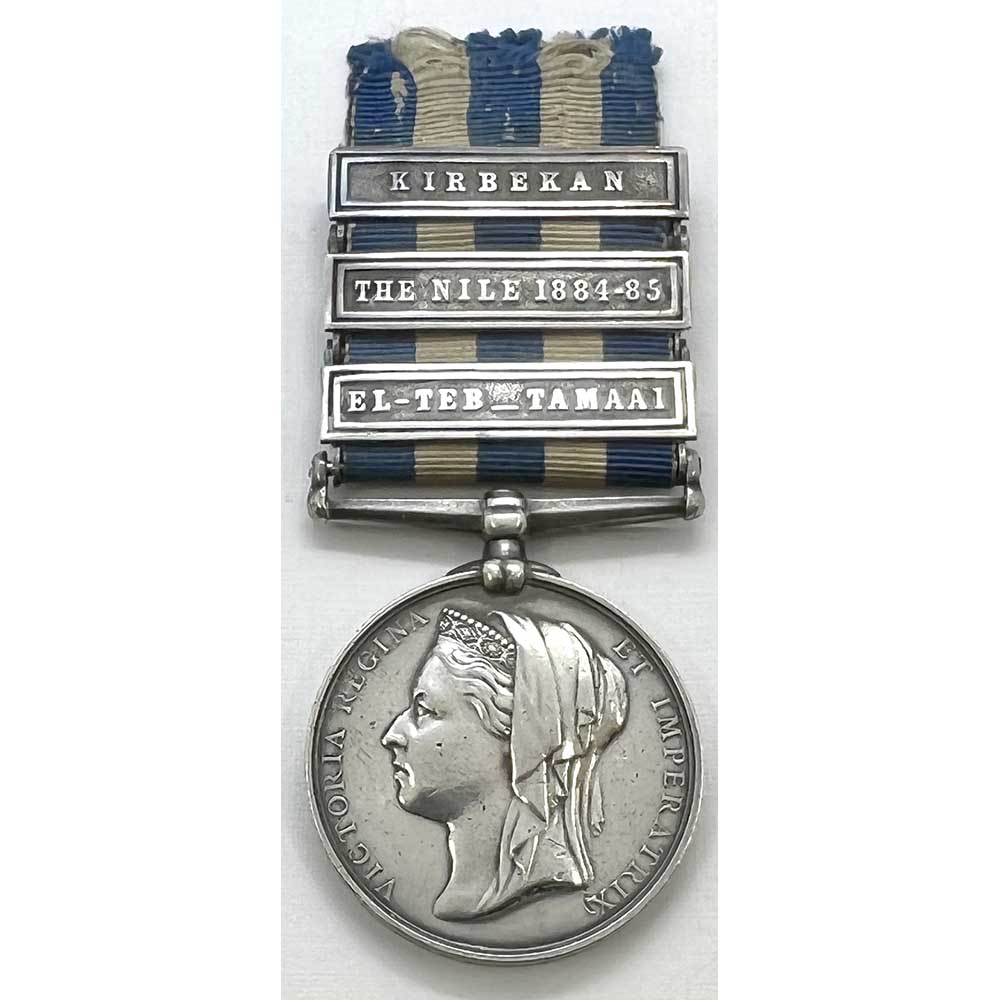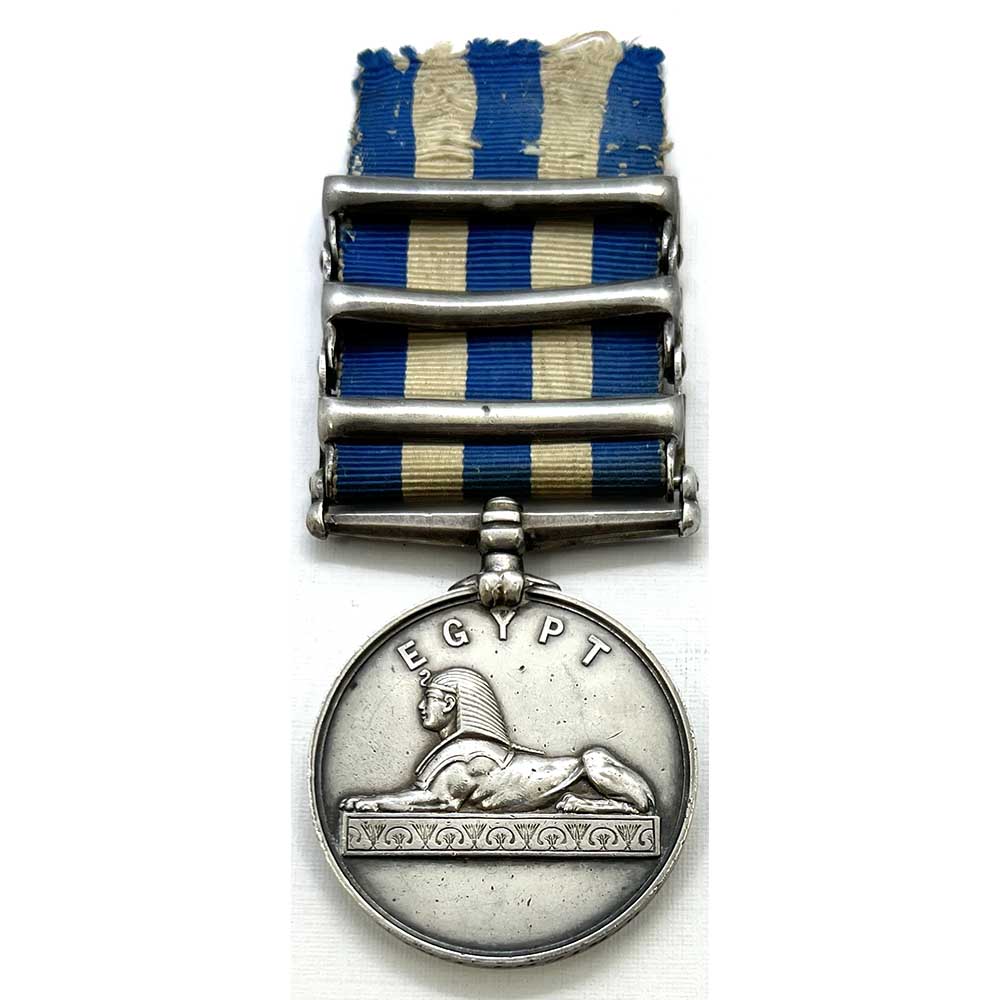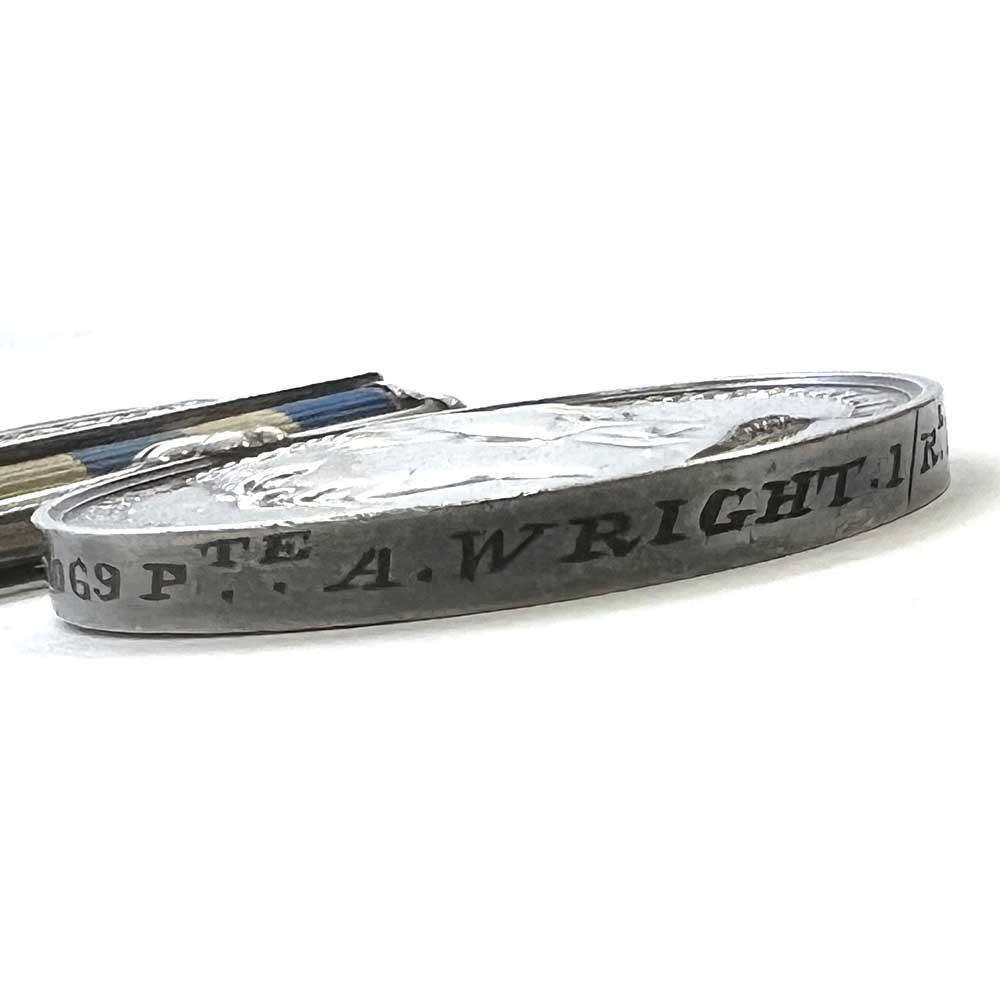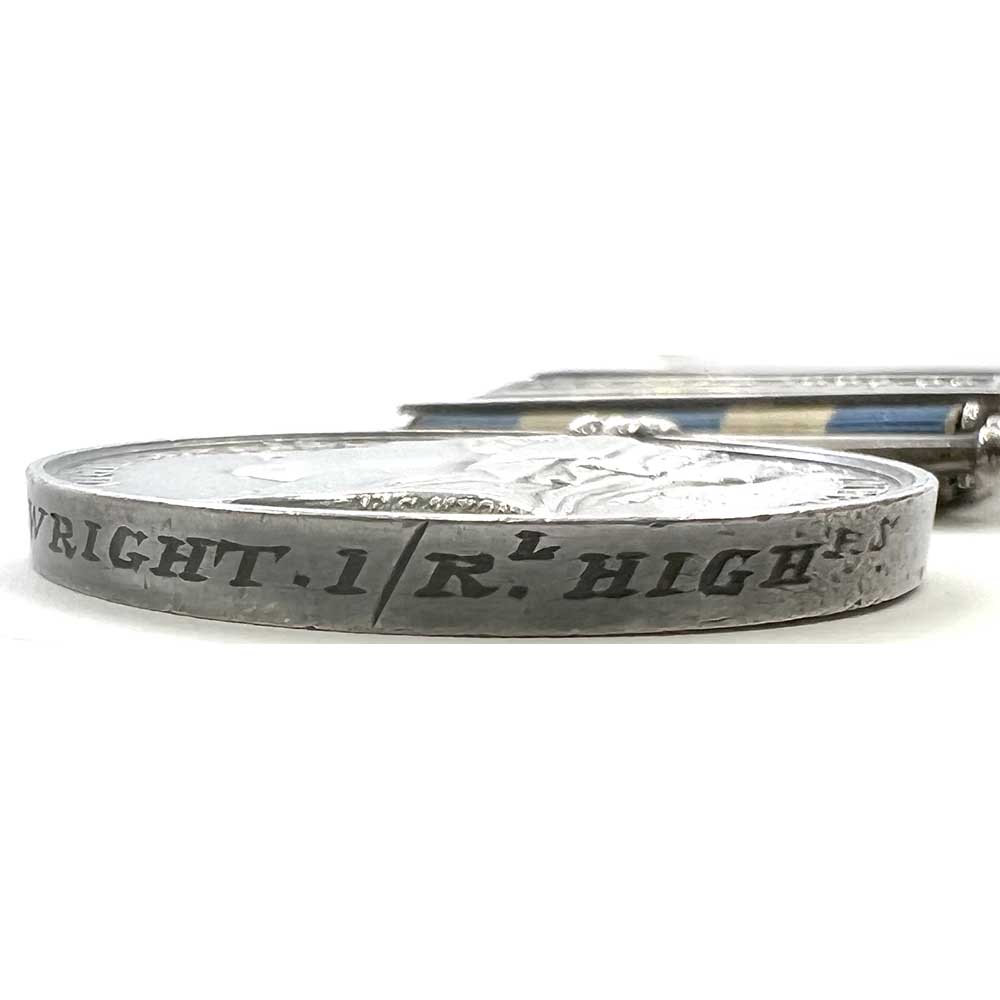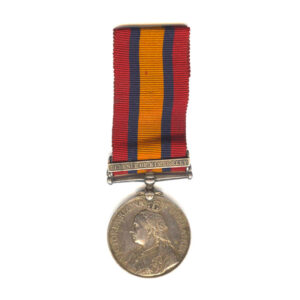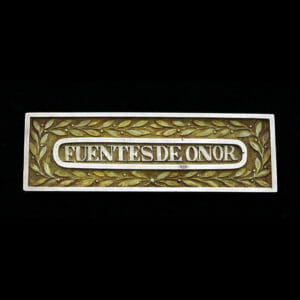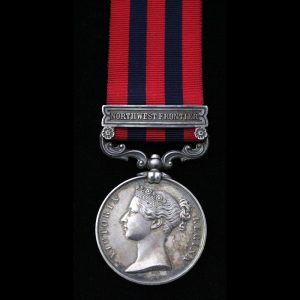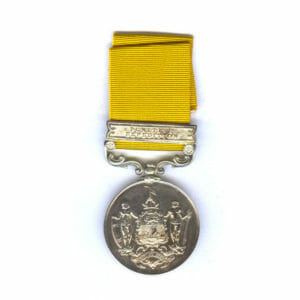Description
Egypt Medal, undated, 3 bars, El-Teb_Tamaai, The Nile 1884-85, Kirbekan, 1069 Pte A. Wright, 1st Bn Royal Highlanders, the Black Watch, wounded in action at Battle of Tamaai on 13th March 1884.
Officially engraved: “1069 Pte A. Wright. 1/Rl Highrs” Some pitting from wear with Khedive’s Star, on old silk ribbon.
Alfred Wright, was born in Beyton, Bury St Edmunds, Suffolk circa 1861-3.
He first attested for service aged 18 on 26th March 1881 with the local Suffolk Regiment from the Surrey Militia, transferring to the 1st Black Watch on 1st February 1882.
He saw the following service:
Home, 25th March 1881 – 9th November 1882
Egypt, 10th November 1882 – 30th April 1886
Malta, 1st May 1886 – 30th March 1888
Home, 31st March 1888 – 24th March 1893 (Army Reserve since arriving back home)
His papers show that he served in the “Eastern Soudan 1884 and Nile Expedition 1884-5” Campaigns,
and read that he was “Wounded at the Battle of Tamaai 13 March 1884”
Earning the “Egyptian Medal 1884 with clasps for El-Teb-Tamaai, Bronze Star and clasps Nile 1884-5 & Kirbekan”
At the battle of Tamaai, the regiment suffered a lot of casualties.
Major Walker Aitken along with 8 Sergeants, 1 Drummer and 50 Privates were killed in action, whilst Lt Col W. Green, Captain N.K. Brophy, Lieut D.A. M’Leod, 1st Sergeant 3 Corporal and 22 Privates were wounded in action.
On the day, Private Thomas Edwards of the 1st Battalion Black Watch earned a Victoria Cross for Tamaai on 13th March 1884.
The following is an account of the Battle of Tamaai from the perspective of the Black Watch from “History of the Scottish Highlands”, by TC Jack, 1887”
On 12th March, about 1 P.M., the whole force, with the exception of one company 1st Battalion Black Watch, under Major Kidston, which remained to guard the post, marched some six miles inland, encamping that evening at No. 2 Zareba, in close proximity to the enemy, who, during the night, opened an irritating fire on the square, and kept it up, with little intermission, until daylight. This fire, though excessively annoying, was not replied to, and did very little harm.
The force to be engaged in the coming battle of Tamaai was the same as that which fought at El Teb; but on this occasion each brigade was to form a separate square, and these were to advance in echelon, with an interval of 300 yards—the 2d Brigade leading; and Major-General Sir Gerald Graham, Commanding the Forces, accompanied the leading square. Part of the front and the left side of the square was formed by the Black Watch; the rest of the front and the right side by the York and Lancaster Regiment; and the rear by the Royal Marines. The Naval Brigade, with their Gatling and Gardner guns, occupied the centre of the front.
Immediately after the advance commenced, the enemy opened a well-sustained fire from a ravine about 900 yards in front, and the mounted infantry, who had been covering the front, retired. When about 150 yards from the ravine, Major-General Sir Gerald Graham, who was in the 2d Brigade square, and riding alongside the officer commanding the Black Watch, ordered him to charge, an order which was promptly obeyed. The enemy at once disappeared from the front, and when within a few paces of the ravine, Lieut.-Col. Green halted the battalion, wheeled the companies on the left flank into line, and had the whole regiment carefully dressed, there being no enemy before them to prevent this. The officers were then ordered to the front to keep down unnecessary fire.
When the order was given to the officer commanding the Black Watch to charge, no such order was conveyed to the other officers commanding corps forming the square, and the result was, that when the Black Watch charged, the York and Lancaster Regiment of their own accord, and without orders, hurried their pace to keep up, which, as a matter of course, they were imperfectly able to do. The consequence was, that when the square halted, there were gaps in front. The enemy, keen to remark a blunder, saw their chance, and attacked where the gaps were to be seen. So soon as the attack had been developed, D Company (Captain Stephenson) of the Black Watch was brought up at right angles to the front face, and thence opened a very effective fire on the enemy, until the Naval Brigade were able to bring their Gatlings and Gardners into action, when the company was brought back into its place in the square. The morning being dull, the smoke of the machine guns hung about so heavily that it was impossible to see across the square what was going on. Presently a shout was heard, and it was observed that the enemy had broken into the square, and were rushing in great numbers to attack the Black Watch in rear. The commanding officer had hardly time to turn the battalion about, when a desperate struggle commenced. Nothing could have exceeded the bravery and cool discipline of all ranks, and although many were young soldiers, with their rifles loaded, they obeyed orders, and fought only with the bayonet, readily realising how dangerous it would be for their comrades, and the men of the York and Lancaster Regiment, many of whom had been forced back fighting, if they fired.
The four companies of the regiment forming part of the original front face of the square were now compelled to retire. Attacked on all sides, they got into clusters contesting every inch of ground, and supported to some extent by the three companies on the left side, who, in retiring to their left rear, were able to show a better front; and thus gradually the regiment was able to reform. The Gatlings, however, had for the moment to be left in the hands of the enemy, but the sailors manning them had, before retiring, rendered them useless. The 1st Brigade, however, moved up steadily, and as soon as protected by its fire, Davis’s Brigade rallied, and, advancing again in good order, the guns were in a very few minutes recaptured. The loss of officers and noncommissioned officers was, however, heavy. "When a square is pierced," says a military critic, "though only in one place, the usual result is hopeless confusion and disaster. Not a man of the square can fire a shot against the enemy rampaging within, without running the risk of shooting a comrade; and it is in the highest degree creditable to the troops composing the broken square [at Tamaai], as it would have been to the hardiest of veterans in a like case, that they were able to rally so soon from the helpless and confused mass to which for some doubtful minutes they were reduced." The struggle was hard while it lasted, but "at length the terrible fire of the breechloaders prevailed over valour as brilliant and heroic as was ever witnessed," and the enemy were compelled slowly and unwillingly to give way. The 1st Brigade advanced across the ravine to the village of Tamaai, which was burnt, thereafter returning to the wells; and about 4 P.M., the whole force retired to the zareba which they had left in the morning, where the dead were buried in the dark.
